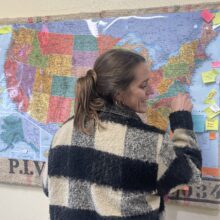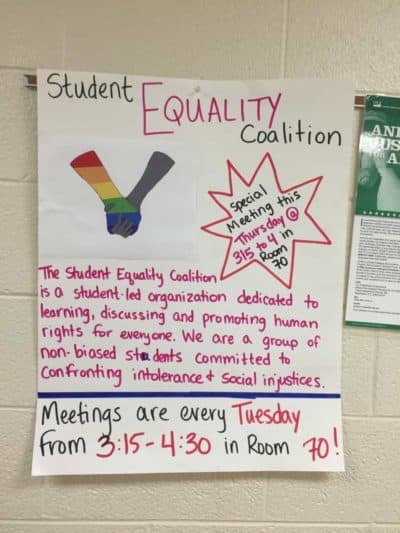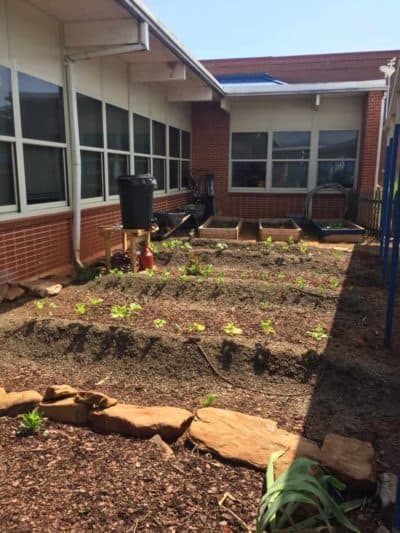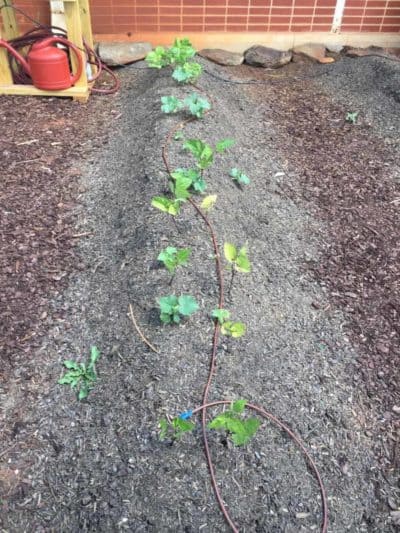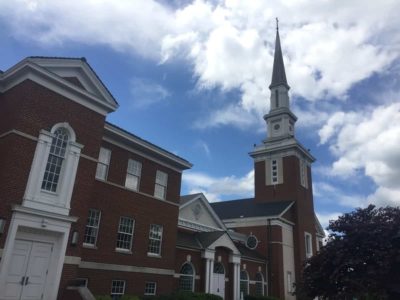“Whole school, whole community, whole child”
This is the slogan painted in a hallway of Jackson County’s Smokey Mountain High School. The hallway is unlike any other on campus, as it houses one of five lab schools in all of North Carolina, the Catamount School. Four rooms are dedicated to 55 sixth, seventh, and eighth graders in this school, which opened in the fall of 2017.
Lab schools were created by the General Assembly in 2016 as a way to improve underperforming schools while providing opportunities for teacher and school leader preparation. The schools are run by UNC System universities and have charter-like flexibility. As one of the original lab schools, the Catamount School just completed its second year.
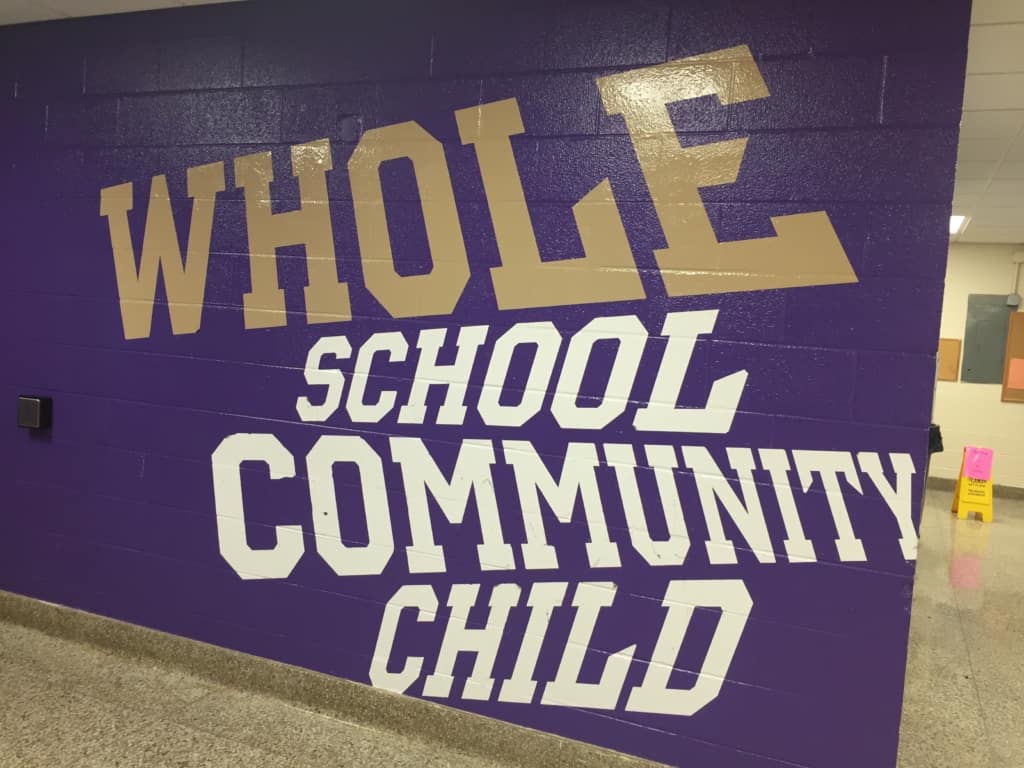

The relationship between Western Carolina University (WCU) and the Catamount School is palpable. Being a state-mandated initiative, one can imagine the potential difficulty getting community and institutional buy-in, but Principal Chip Cody says the chancellor and school superintendent at the time were on board to make it happen.
Students spend time on the university’s campus (which is less than a 10-minute drive from school), at the library, utilizing the theater for drama club, or attending special events. Educators at Catamount are not only teaching these middle schoolers, but instructing undergraduate content and methods. It is not uncommon to see interns and pre-interns from Western Carolina’s College of Education sitting in a Catamount classroom observing their instructors.
The experience of observing teaching methods in action, rather than learning by lecture can be impactful, says Cody. In a school, he knows no day is the same, and these undergraduate students are seeing how their instructors are handling the classroom when things don’t go as planned or students have tough days. His students also get to see what college students look like, giving them important role models.
“Getting our kids in front of college kids gives them kind of something, you know, a model to look up to. Getting college kids in front of a middle schooler is a surefire way to get them to reflect on, do they really want to be a teacher? … Can they handle what’s being thrown at them? So it’s kind of a win-win for everybody.”
Another added bonus of working within the university system is the access to research projects. Students wear heart monitors and fitness trackers during PE for research projects through the WCU health department. A professor is using student data in his literacy and resiliency study.
“That’s the other part of it,” Cody says. “[It’s] not just we’re here to serve middle school students and provide a model for undergraduate interns and student teachers, but also our kids are involved in research. So [we are] influencing future school practices, educational practices.”
Amanda Clapp has been an educator in Jackson county for 13 years and teaches sixth, seventh, and eighth grade science at the Catamount School. She has been in traditional school environments and believes the biggest difference with the lab school model is its small size.
“We can differentiate to a level that other traditional schools just can’t or don’t do,” Clapp described. “And when a kid comes in, we can really get to know them. We can see what they need, see what they know, build on their strengths, and then challenge them or remediate to really build content but also to build all of the critical thinking, communication, and collaboration processes that we need every day as grown ups.”
Her relationship with university professors has transformed her classroom lessons, as she can call upon colleagues who come themselves or send undergraduates who are interested in working with kids in fields like public health and physics. She has had nursing students, chemists, physicists, and biologists join her for different projects at school.
Learning curve
While Cody believes they are making significant progress, getting the school up and running did not come without a learning curve for everyone involved.
“In year one, everybody’s just kind of trying to figure out what’s going on and how to make it work,” Cody said.
Rebecca Dinsdale, a parent of a Catamount student the first year and the wife of Catamount’s first principal, expressed frustration at the lack of support from the state in helping universities understand how to run a K-12 school.
“The university people just really didn’t understand how public schools work,” she said, citing things like custodial services, busing, and meal services — all essential to running a school but not something the university was used to handling. “Whether you have 10 students or 400 students, the administration stuff is all the same,” she added.
Dr. Kim Winters, Dean of the College of Education and Allied Professions at WCU, reflected on the first year, saying, “I think it’s important for us to be honest about it. It was complicated. And it was difficult because we were seeking answers to things that folks couldn’t give us answers to because we had to figure it out together.”
“Is it always easy?” Winters asks, “Of course not. But, we have built some strong relationships with high school teachers, staff, and students.”
Getting teacher buy-in was important, so district teachers were part of the lab school development process. Smoky Mountain High School educators were asked, “What do you need middle schoolers to look like by the time they get here?” Decisions were then made based on their input.
Once the first year was over, the Catamount School’s biggest goal was to reflect on the year and move “out of survival mode,” according to Cody. They tweaked the school improvement plan, changed protocols at both the school and university level, and focused on building their school culture.
This year, they have regular meetings with diverse representatives from the school and university to discuss non-academic issues. Community partners are brought in if they discover a student is in need of something they cannot provide directly. And the number of students they serve at the Catamount School is intentional.
“Having a small group really helps things not fall through the cracks,” Cody said. “You know, if you’ve got a kid struggling, there’s no place for that to hide.”
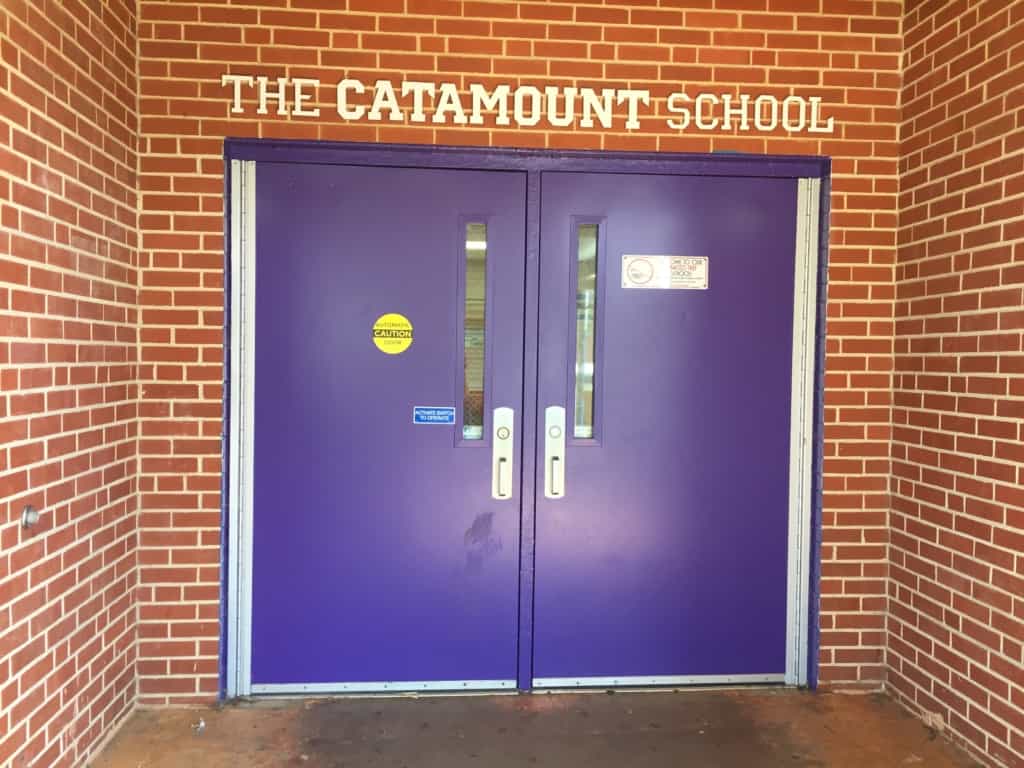

Looking to the future
Cody believes they have passed through the initial stages of growing pains and is eager to share what they’ve learned over the past two years as a lab school. However, he is still running up against a problem: most people do not know what lab schools are.
“Lab schools are not something that’s really known,” he said, “and so some people don’t know what we are. Some people think we’re an alternative school to send kids to. Some people think we’re a charter school. Some people just think we’re … just some university folks working at the high school … So the big growing pain is trying to help people understand what we actually are [and] who we are supposed to be serving.”
He summed up the confusion, stating, “We’re [an] operating middle school on a high school campus, but we’re university people.” It is easy to see where the confusion lies.
Science teacher Amanda Clapp wants everyone to know that lab schools are still supporting local students.
“I think what people need to pay attention to is that this is still supporting local kids,” she said, “and it’s still using local teachers to support local kids.”
Glossary
Alternative Learning Programs and School (ALPS) :
“Safe orderly, caring and inviting learning environments that assist students with overcoming challenges that may place them ‘at-risk’ of academic failure. The goal of each program and school is to provide a rigorous education while developing individual student strengths, talents, and interests.”1
Charter School:
“Public schools of choice that are authorized by the State Board of Education and operated by independent non-profit boards of directors. Charter schools operate with freedom from many of the regulations that govern district schools, but charter schools are held accountable through the State assessment and accountability system.”2
Traditional Public School:
“Are under the jurisdiction of the Department of North Carolina Public Instruction and exist within 115 local Local Education Agencies (LEA) across the state.”3
Laboratory School:
“Aims to provide enhanced educational programming to students in low-performing schools and to plan demonstration sites for the preparation of future teachers and school administrators. The Lab Schools will partner directly with local school districts to promote evidence-based teaching and school leadership, while offering real-world experience to the next generation of teachers and principals.”4
This is the fifth part in a series on North Carolina’s lab schools. Read an overview of lab schools here, and then read profiles of ECU Community School, D.C. Virgo Preparatory Academy, and App Academy at Middle Fork.

